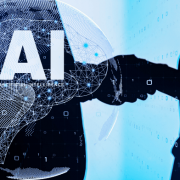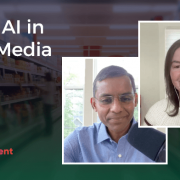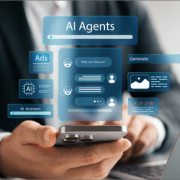I had an opportunity to participate in the 2023 Gartner Data & Analytics Summit in Orlando. It was a humbling experience networking with & learning from various analysts, speakers, exhibitors, and industry peers. Here are 10 learnings that stuck with me from the conference mixed with my own reflections:
- The struggle to demonstrate tangible ROI from D&A initiatives continues
Gartner’s 2023 CDO survey shows 69% of D&A leaders are struggling to deliver measurable ROI. To change this, leaders must master the language of business, stop chasing the “shiny new objects”, and use both financial & financial influencing factors to measure & articulate value.
- The divide between business & IT organizations in large enterprises is real & growing
Far too many examples or conversations where Business & IT don’t seem to be operating based on a shared understanding of what success looks like. Introducing new technologies or operating models won’t necessarily overcome this divide. What is needed is empathy, willingness at the top, and then specific interventions in your context. This topic deserves more attention in the industry.
- “Enterprise decision networks” is an emerging capability to watch out for
“The success of an organization is nothing but a sum of all of its decisions.” Gartner predicts that 75% of Global 500 companies will use decision networks as a competitive differentiator. Not many products exist in the market that systematically close the loop between analytics & decision making. We train & optimize AI models based on data but rely on training & then just experience for humans. Expect decision intelligence platforms to emerge that help you model, track & improve decisions.
- LOCO/NOCO are driving the next wave of innovation in D&A
Companies like Nexla, Aible, Cinchy, and Kyligence are reducing the effort needed to organize, explore, collaborate, and trust data & insights. Nexla is automating data engineering; Aible is automating exploratory insights; Cinchy is eliminating the need for data integration; and Kyligence is automating the metrics layer. They are reducing the need for developers in the data-to-insights lifecycle. Expect shorter time to value and higher software & niche labor costs – all while hopefully lowering the TCO!
- Are we overestimating the short-term impact & underestimating the long-term impact of Generative AI?
ChatGPT is likely going to be the “word of the year.” Nearly every vendor had something to say about Generative AI. The possibilities in content creation, workforce productivity, software engineering and knowledge management are eye opening. To take advantage companies should develop a position paper outlining the opportunities & risks and establish an incubation team to explore use cases. To prioritize the right ones, apply the “willingness to pay” test to determine use-case worth.
- A consolidation wave is coming in the D&A technology landscape potentially adding to your modernization debt
As I observed the bake offs for data management, analytics & BI, and DS/ML, it’s clear that many vendors have overlapping foundational capabilities & then a few differentiating ones. Most try to differentiate based on knowledge of their own offerings. Customers need to be very systematic in evaluating these tools to identify what will be relevant in their data ecosystems or be ready to see their modernization debts rise. While the total addressable market is very large in D&A, can the industry afford so many overlapping platforms?
- Executives need to become AI fluent to seize opportunities for & mitigate new risks to their businesses
AI is going to disrupt almost all businesses before the end of this decade. But are executives in different organizations comfortable with AI? Given the potential for business benefits & harm, executives must invest in AI fluency. They need to be able to ask the right questions to guide their teams towards relevant opportunities in customer experience, operational excellence, or new business. They should also take questions around harm – both malicious & commercial use – very seriously & establish governance frameworks to exit early when risks are high.
- FinOps practices are essential to avoid surprises in cloud bills
Gartner shares that a primary complaint from cloud buyers is the lack of predictable costs & transparency in their purchased cloud solutions. Factors such as rapid provisioning, pay for what you use, & elasticity that made cloud attractive are also leading to overspend. One way to bring equity in cloud cost monitoring is to use price performance metric (total cost/total work capacity). Organizations must apply FinOps to cloud budgeting, governance, & optimization practices. FinOps requires technical & cultural shifts to ensure CFO, CIO/CTO, and Business Leaders can connect cost to value.
- If your data literacy programs aren’t yielding results, shift to persona-based or employee-led models
Data fluency is an organizational capability that enables every employee to move away from “just reading the numbers” to “accessing data, understanding its context, interpreting insights, and using them” as fluently as one can speak in their language. A powerful success story from New York City Health & Hospitals confirms that to get effective results organizations should consider persona-based & adult learning models in their data literacy programs.
- Organizational change leadership is critical to close the gap between insights & actions
And lastly, but perhaps most importantly, to get any meaningful data-driven results in your organization, you need to be able to effect change in yourself, your teams, & your organization. I enjoyed Shankar Vedantam’s talk on how the “hidden brain” shapes our capacity for change. Barriers to motivation include organizational inertia, the IKEA effect, and the sunk costs fallacy. Techniques to persuade include adopting swift irreversible change actions, using positive reinforcement, and doing hard things first.
Recent Blogs

Bots to Brains: How Agentic AI is Changing the Game
July 8, 2025

The Future of Supply Chains Is AI-Driven—Is Your Business Ready to Embrace the Change?
July 2, 2025

What Retail Media Can Learn from Instacart’s AI Strategy
June 24, 2025

Beyond Chatbots: How Agentic AI Is Automating High-Stakes Business Decisions
June 11, 2025


